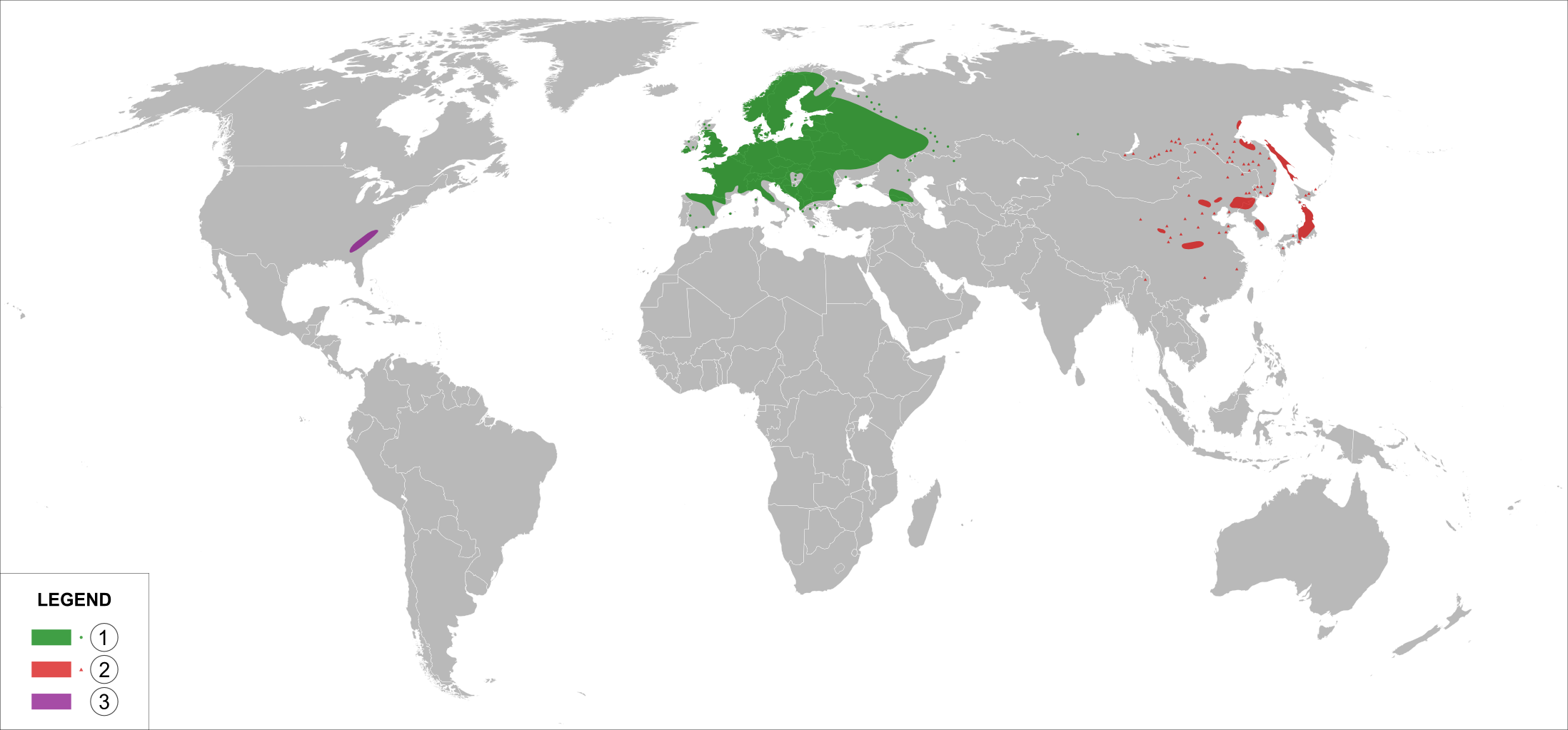
Habitat
Being a plant, we would expect to find Convallaria majalis in places where there is sun, water, and CO2. Well, that really narrows it down, does it not? (Note the heavy sarcasm.) These aspects are all crucial reactants in the process of photosynthesis. Without one of these present, it is difficult for the Lily of the Valley to survive for long periods of time.
But really now, where can one physically find Lily of the Valley?
Convallaria majalis is found in high mountain regions
around Eastern North America, as well across temperate regions
of Europe and Asia. (Muenscher, 1966). But, it is important to note
that the hearty Lily of the Valley flower is commonly used as a
decorative garden plant across North America as well as Europe. Its
beautiful flowers are very alluring. Part of its popularity
can also be contributed to its durability in many different types of
soils. The various amount of nutrients found in soils are mostly
useable by Lily of the Valley. The map below shows the natural
distribution of Convallaria majalis in purple green and red. It is
important to note that due to its use in gardens across North
America, it has an even more widespread geographical coverage that it appears
below.

Agnieszka
Kwiecień, Wikimedia Commons, 2008.
Convallaria majalis is easily confused for a related species, Convallaria montana. C. montana is found a little bit more Northwest, usually in Tennessee and Virginia, and looks almost identical to Convallaria majalis (Arena & Hardin, 1974). Whichever species you may be looking at, be sure not to snack on either one, both are toxic!
Lily of the Valley has to interact with a variety of other organisms in its habitat. Since it is a low growing organism, there is quite a bit of competition for resources, primarily space and sunlight. Convallaria majalis has taken on some adaptations to deal with these competitors, but even with them, the space must be shared. The ground level of temperate areas is a fairly popular niche to reside in. Although some adaptations and interactions have developed, Lily of the Valley has definitely learned to 'play nicely' with its neighbors. Most of the adaptations only strengthen Convallaria majalis but do not harm other organisms directly. Not directly, unless they decide to take a bite out of it and its feast of toxins! If an organism does, they could likely die.
You're in one of these places and you don't see Lily of the Valley? You're probably not looking hard enough. Check out life cycle to see when it flowers. There small white flowers that classify it, and it should be relatively easy to spot.
Convallaria majalis has some adaptations that allow them to reside in the habitats just discussed.